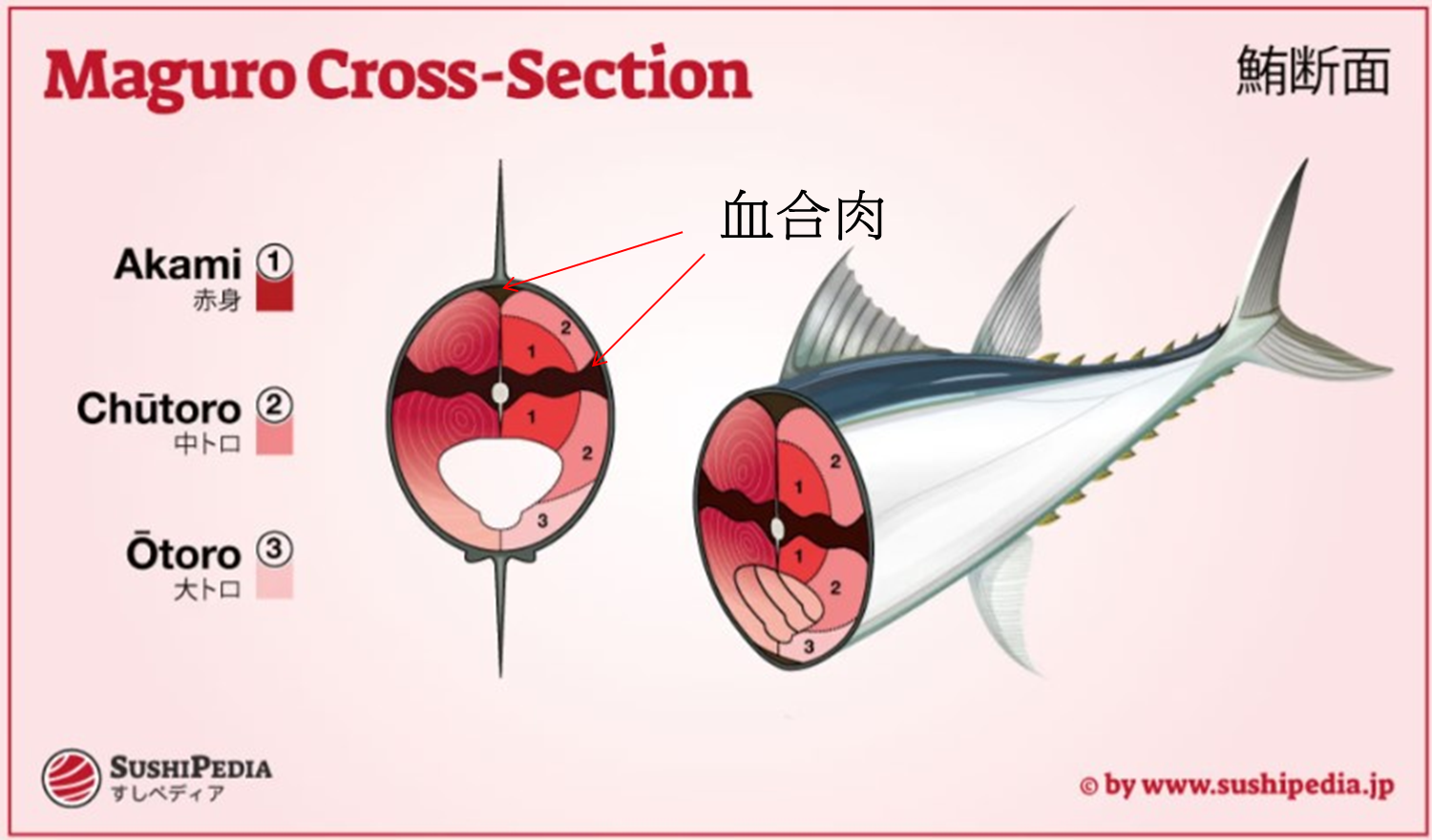黃鰭鮪加工副產物血合肉釀製魚醬油之研究
郭科良、楊涵婷、蕭泉源、蔡慧君 (2017) 。黃鰭鮪加工副產物血合肉釀製魚醬油之研究。水產研究,頁65-77。

本研究以黃鰭鮪 (Thunnus albacares) 加工副產物血合肉為原料,經水解後接種豆麥麴及耐鹽性微生物進行醱酵,探討其釀造魚醬油可行性,以提高副產物之附加價值。黃鰭鮪血合肉加入 3 倍 (v/w) 蒸餾水經自家消化或添加酵素 Alcalase 和 Flavourzyme 水解 4 及 6 hr,以酵素水解組之胜肽類皆高於自家消化組和控制組,其中又以 Alcalase 水解 2 hr 再Flavourzyme 水解 4 hr 水解液 (A2F4) 增加更為明顯。自家消化或酵素添加組之揮發性鹽基態氮 (VBN)、三甲胺 (TMA) 與水解率等皆高於控制組,且以 A2F4 最高,顯示採用 A2F4 二階段複合酵素水解可增加具甘味和功能性之游離胺基酸和胜肽類,故以此作為後續魚醬油醱酵原料。將鹽度為 15% 及 30% 之 A2F4,接種 10% 豆麥麴後分別添加耐鹽性醱酵菌酛,於 35 °C 下醱酵 90 天,實驗顯示隨釀造時間延長,四組魚醬油之 L 值降低;a、b 值增加;pH 值皆緩慢下降;鹽分含量無顯著變化;VBN 和 TMA 隨時間延長而增加,可溶性固形物最後呈緩慢上升趨勢至 75 天,而總氮與胺基態氮含量於 60 天達最高量後緩慢下降。綜觀以上,15% 鹽分魚醬油較 30% 鹽分有較高之總氮量、胺基態氮與胜肽含量,且組織胺含量也低於 CAC 魚醬油限量標準,而醱酵期間添加耐鹽性微生物,對於魚醬油製品之品質影響並不顯著,推論應為添加量不足,顯示以鮪魚血合肉為原料,添加豆麥麴進行醱酵製成魚醬油是可行的。
To increase the added value of tuna dark muscle by-product by altering its inclusion in fish sauce, the by-product was hydrolyzed as a raw material and then fermented with soy-wheat koji and salt-tolerant microorganisms. Yellowfin tuna (Thunnus albacares) contains 64.34% moisture, 16.89% protein, 12.62% fat, and 0.92% ash. In this study, 3 volumes (v/w) of distilled water were added to tuna dark muscle through autolysis or enzymatic hydrolysis with the protease (alcalase and flavourzyme), and then hydrolyzed for 4 or 6 hours, respectively. The enzymatic hydrolysis group had much higher peptide levels than the autolysis and control groups did; the alcalase 2 and flavourzyme 4 (A2F4) hydrolysis group demonstrated the greatest increase. The volatile basic nitrogen (VBN), trimethylamine (TMA), and hydrolysis ratio of autolysis or enzymatic hydrolysis are higher than the control group, and A2F4 was the highest. The VBN levels in all the groups were lower than the aquatic product quality limit standard of 25 mg/100 g. According to these results, the A2F4 hydrolysate produced using two-stage complex enzymes can greatly improve taste and functional components such as amino acids and peptides. Thus, this hydrolysate was selected as a raw material for the further fermentation of fish sauce. The salinity of the hydrolysate from the dark muscle was adjusted to 15% and 30%, the hydrolysate was inoculated with 10% soy-wheat koji, and then salt-tolerant microorganisms were added for fermentation at 35 °C for 90 days. The results showed that with prolonged brewing, the L values of the four fish sauces decreased, but the a and b values increased. The pH value slowly declined, and no significant change was observed in salt content. Furthermore, the VBN and TMA values increased with fermentation time, while the soluble solid content increased rapidly until Day 15 and then increased slowly until Day 75. The total nitrogen and amino nitrogen contents increased gradually until Day 60 and then decreased slowly thereafter. The total nitrogen and amino nitrogen of the 15% NaCl product met the fish sauce standards of the Codex Alimentarius Commission (CAC). Overall, the 15% NaCl fish sauce contained a higher amount of total nitrogen and amino nitrogen than did the 30% NaCl product. The histamine contents of the four products were lower than the 40 mg/100 g CAC standard. The addition of salt-tolerant microorganisms during fermentation showed no significant effect on the quality of the fish sauce products. The results revealed that inoculation with soy-wheat koji is a feasible method for making fish sauce from tuna dark muscle by-product.